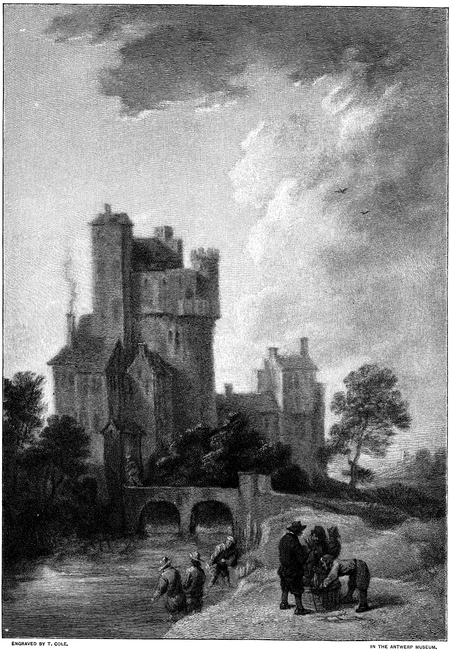Century Magazine/Volume 50/Issue 5/Old Dutch and Flemish Masters. David Teniers, the Younger

eniers the younger was the greatest of the Flemish genre-painters, and stands, after Rubens and Van Dyck, the third great master of the Netherlands. Success attended him from the beginning, and continued with him throughout his long career, which lasted fourscore years. He was born at Antwerp in 1610, and as early as 1632, when only twenty-two years old, was admitted to the Gild of Antwerp. His father, David Teniers the elder, a painter of repute, was his instructor, and he enjoyed the society of Rubens, as well as the friendship of other distinguished artists. In 1637, when twenty-seven years old, he married
a daughter of Jan, or "Velvet," Brueghel, at which ceremony Rubens was one of the witnesses, and he soon came into the favor and patronage of the nobility. He became Dean of the Gild of St. Luke when thirty-five years old, and later was instrumental in the erection of the academy of fine arts, in connection with the gild. Upon the registers of the gild his name is written without the final s. His wife dying, he married in 1656 a daughter of the secretary of state for Brabant. By means of his talents and pleasing personal qualities he attained a higher position in society than had before, or has since, been occupied by any genre-painter of the school. The stadtholder of the Spanish Netherlands —Archduke Leopold William — appointed Teniers court-painter, and also groom of the chambers, including the charge of the picture-gallery, and he was confirmed in both these offices by the successor of the archduke, Don Juan of Austria. Philip IV. of Spain, Christina of Sweden, and the Elector of the Palatinate overwhelmed him with commissions. Teniers became prosperous and popular, and lived in grand style at his château of "Three Towers" at Perck, between Vilvorde and Mechlin, entertaining noblemen, literary and scientific personages, and art patrons, who made a point of visiting the painter.
His extraordinary technical facility of hand, and his untiring industry, enabled Teniers to execute a prodigious number of works. He declared it would need a gallery two leagues in length to contain all his pictures. It is said that he began and finished many of his canvases at a single sitting. His versatility, and his power of imitating the manner of the most various masters, as well as the great range of his subjects, caused him to be styled "the Proteus of painting," for although the animated delineation of the peasant world, under the most varying forms, is his favorite sphere, he frequently gives us scenes from the realms of fancy. The guard-house, with its old armor, drums, and flags, he often painted; and also cattle-pieces and landscapes, wherein his delicate feeling for nature is evident. His sacred pictures are disappointing, being lacking in elevation of feeling. For the Archduke Leopold William, Teniers painted a great number of small copies of pictures in that prince’s gallery, which were engraved in Teniers’s "Theatrum Pictorium," a work that became widely celebrated. The best works of Teniers belong to his middle or "silver period" —a period, beginning about 1645, when he had reached the age of thirty-five, and continuing for about fifteen years. Later his works again assume that golden and often brownish tone which characterizes the pictures of his early period. Burger says," Teniers is like one of the fishes he painted so well: excellent between the head and tail."
The works of Teniers are widely scattered throughout Europe. The gallery of Madrid alone has 53, St. Petersburg 40, the Louvre 36, Dresden 30, Vienna 18, the National Gallery of London i6. The little town of Cassel has 10, and I counted 9 in the Antwerp Gallery, from which I selected the engraved example. The original is but little larger than the engraving, measuring 6¼ x 8½ inches. Its title is "L’Après-diner"(Afternoon). It is an example of his best period. The "silver" manner of Teniers is a greater approach to the cool gray air of nature, and with this improvement in his style there came also a more precise and careful treatment, though there was no diminution of that light and sparkling touch wherein the separate strokes of the brush are left unbroken—a power in which he stands unequaled by any other genre-painter.
